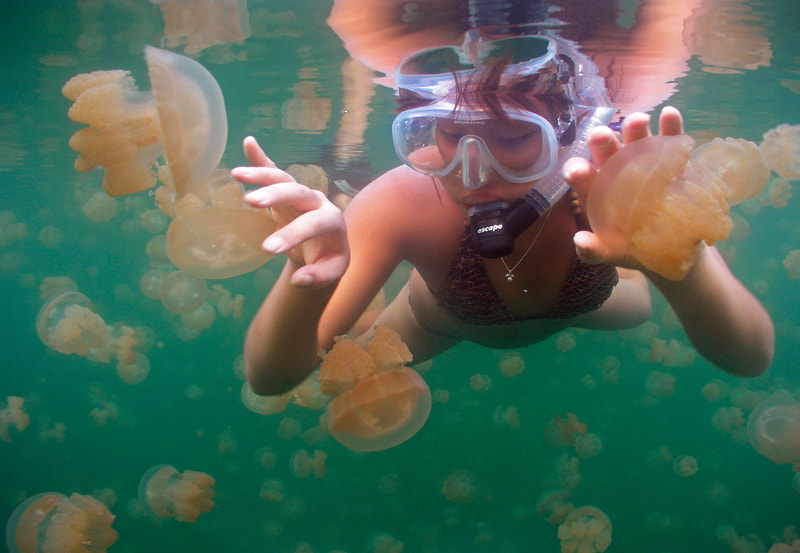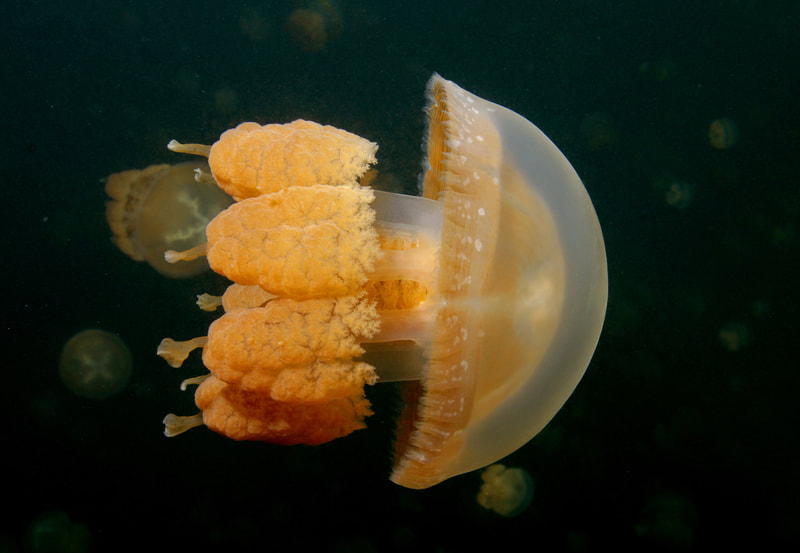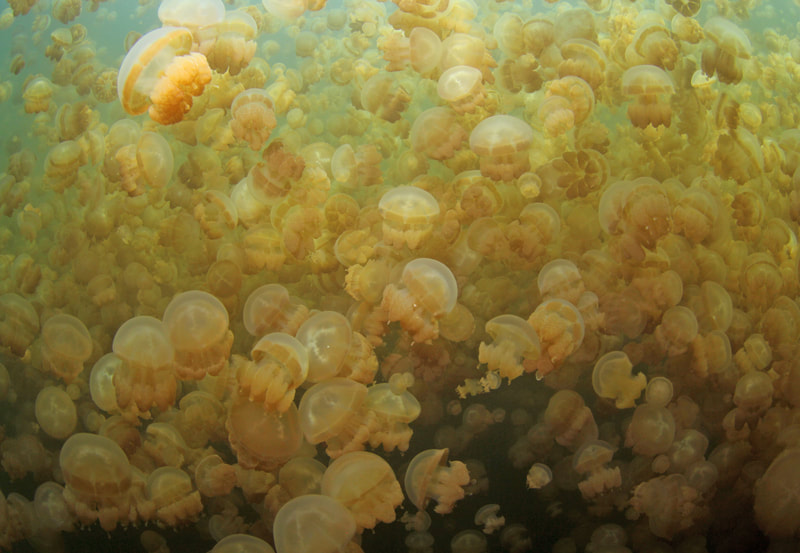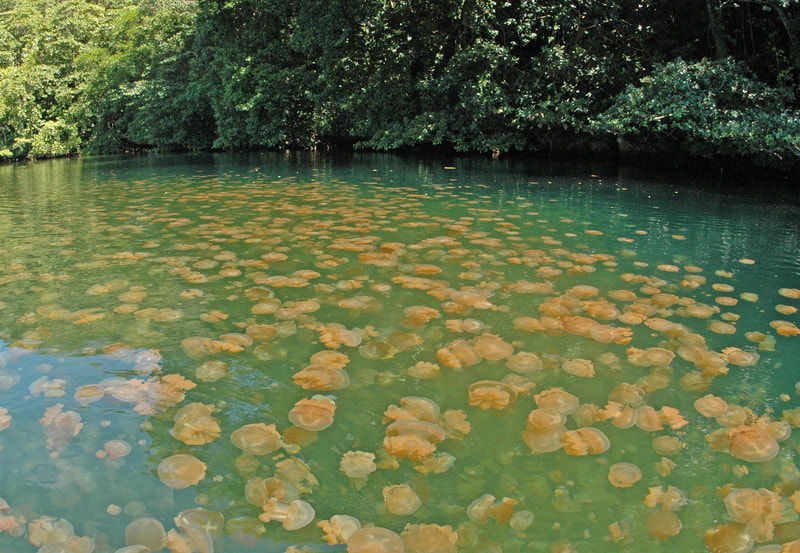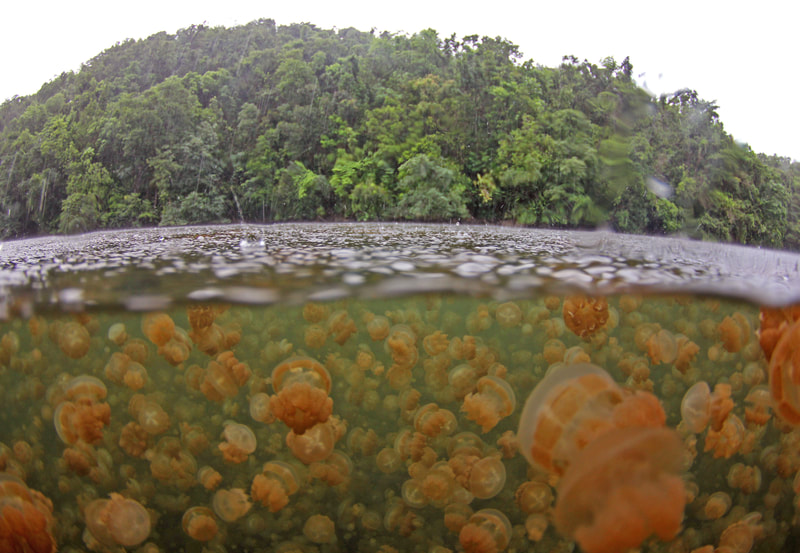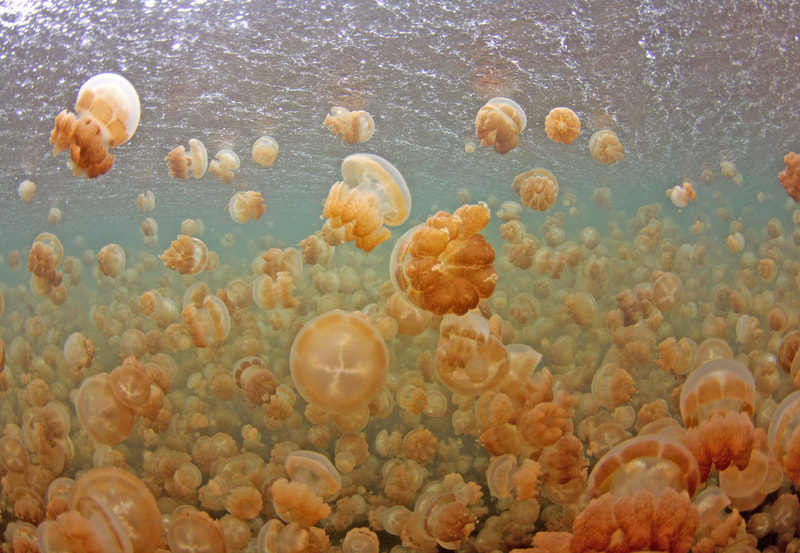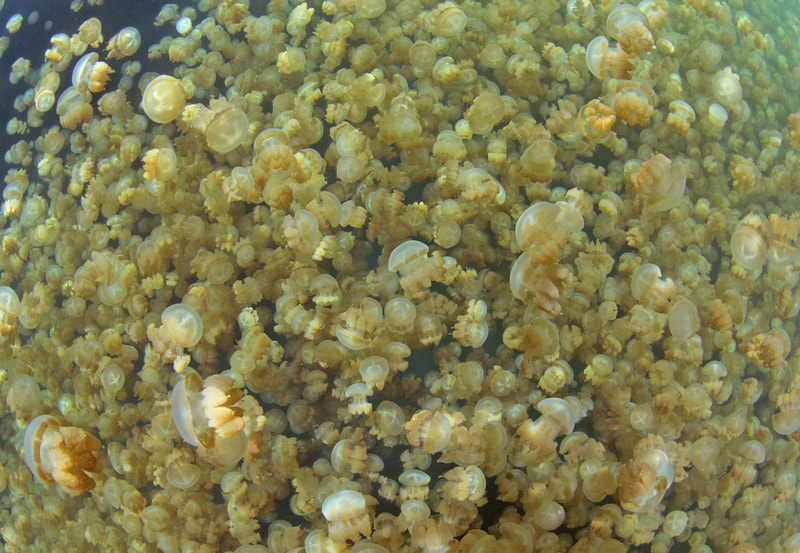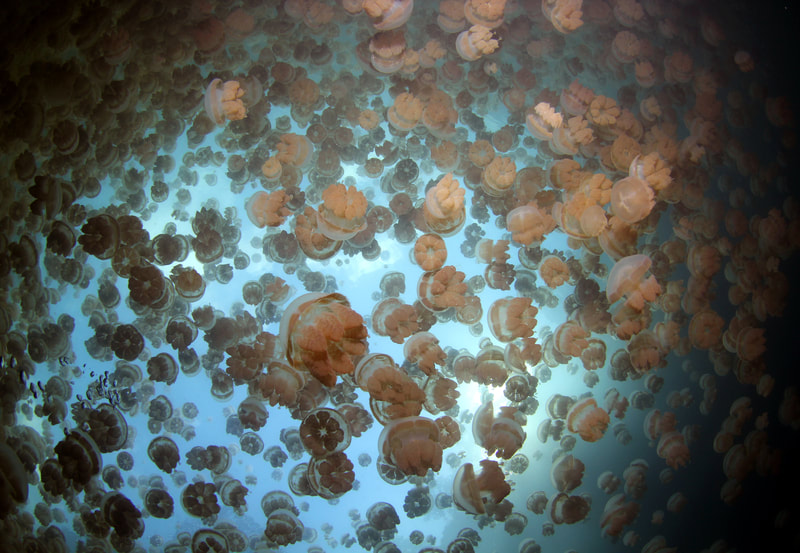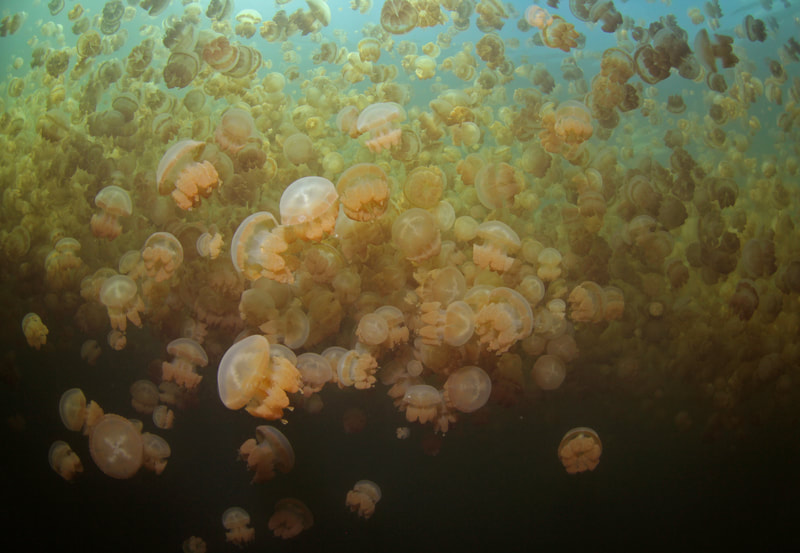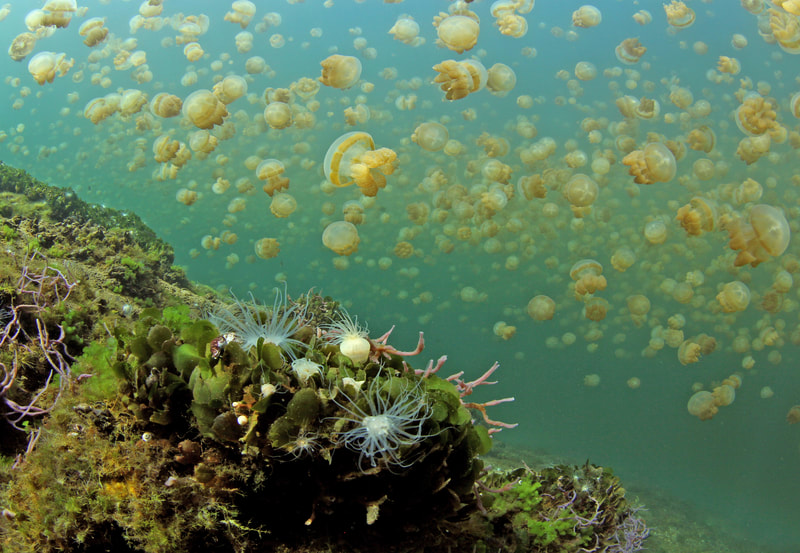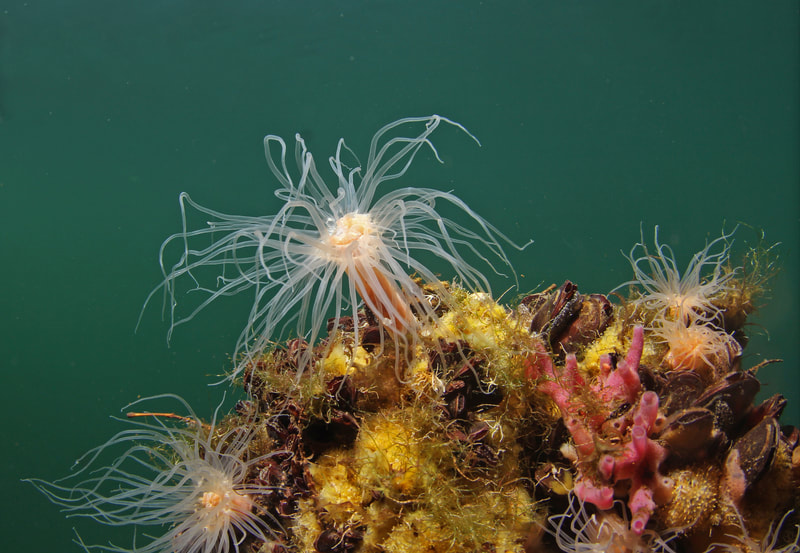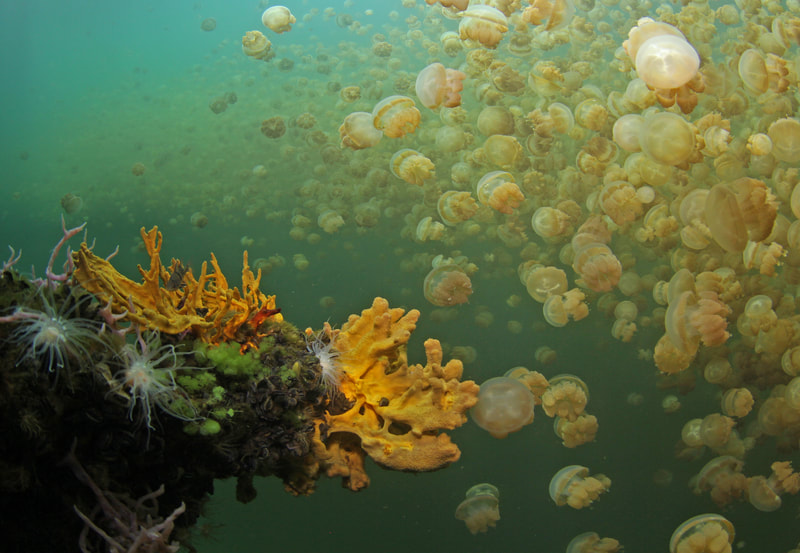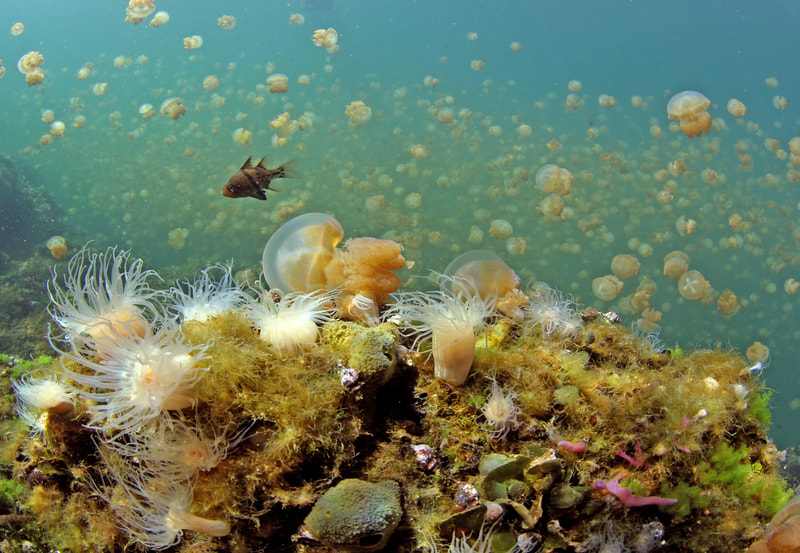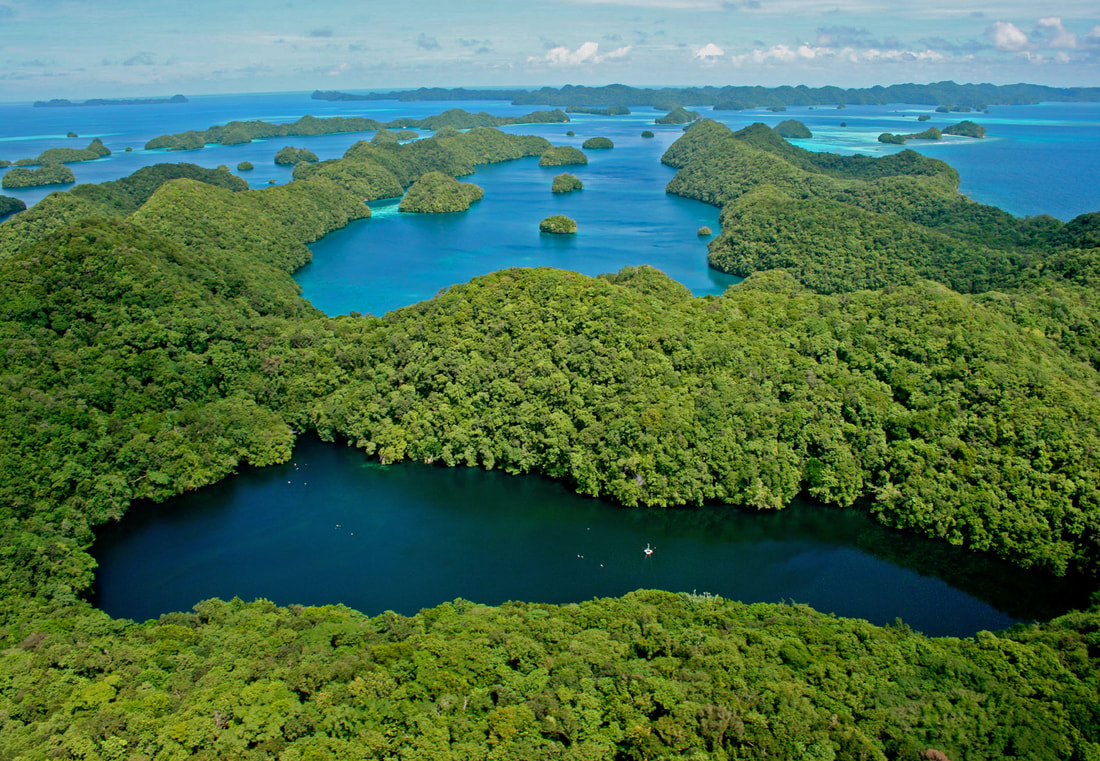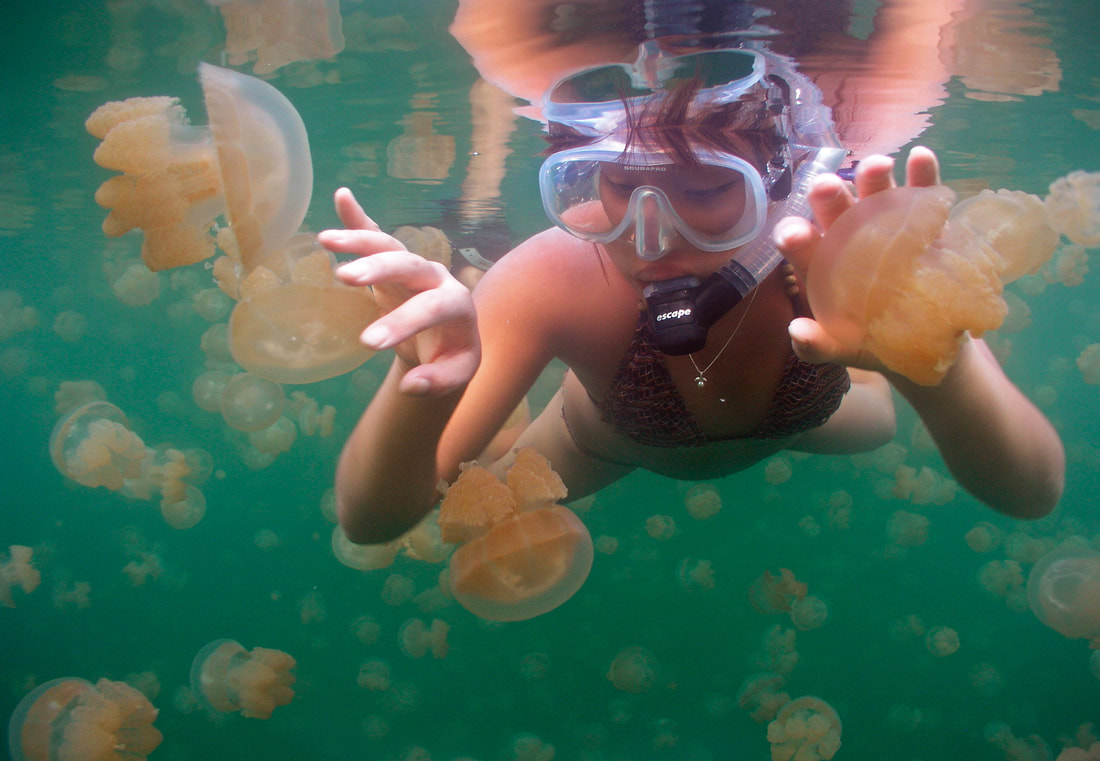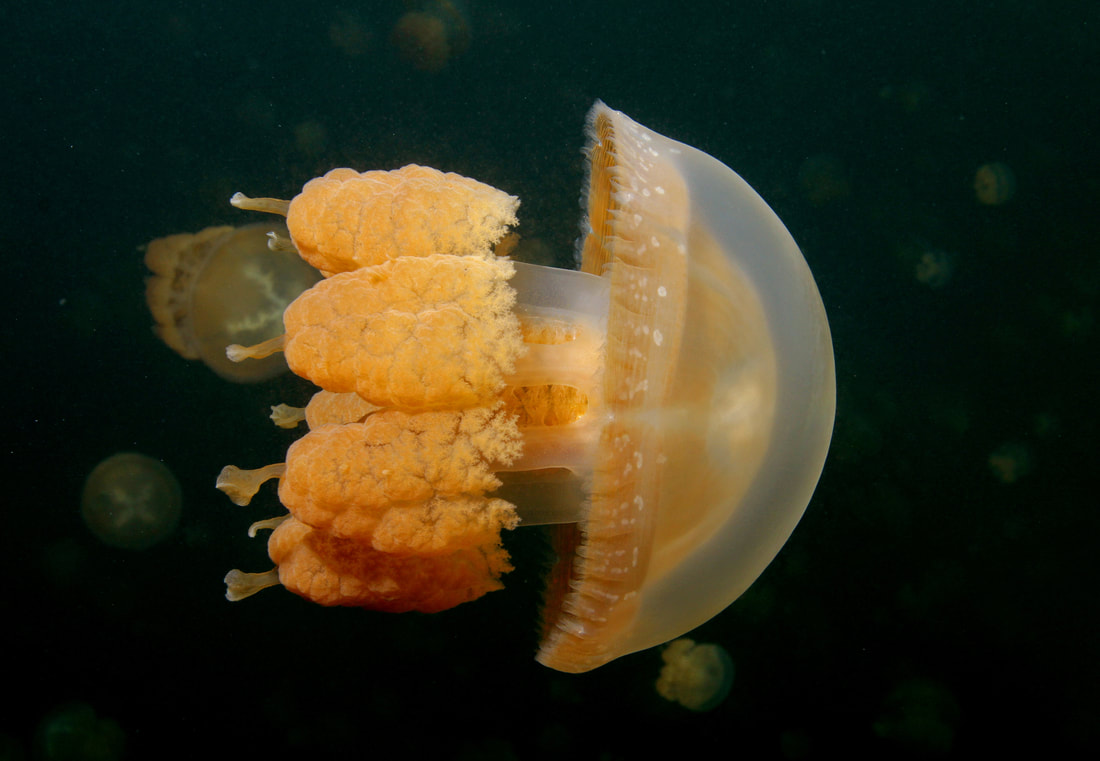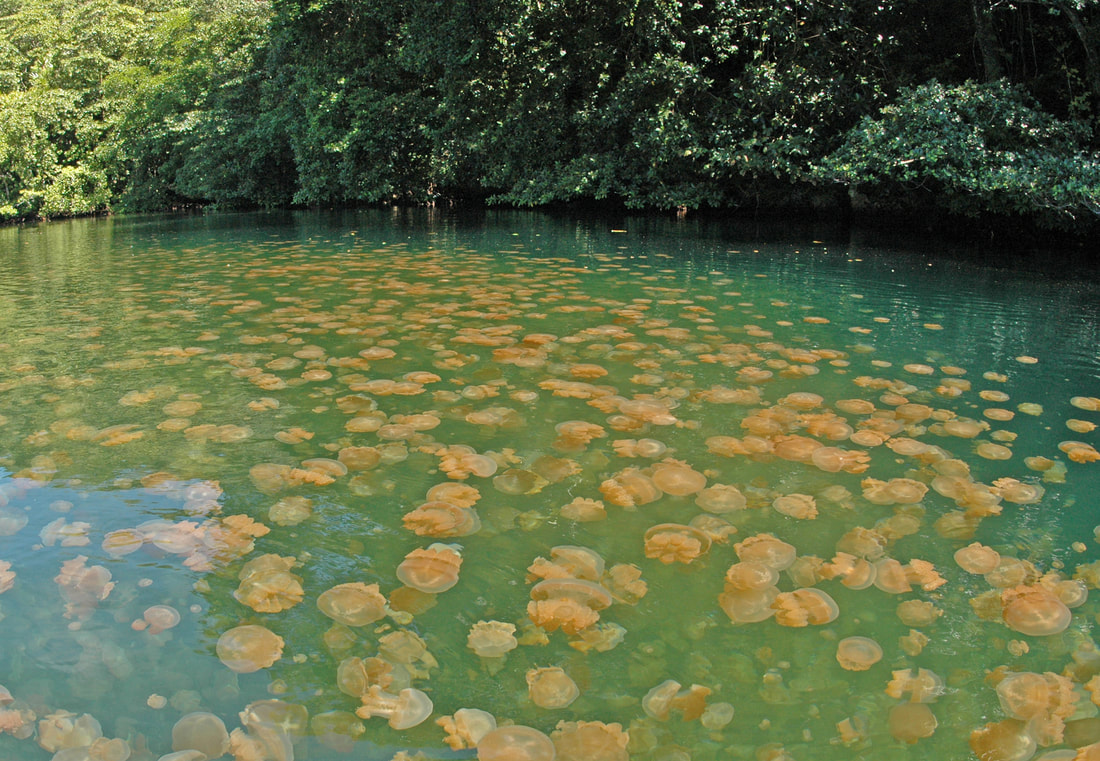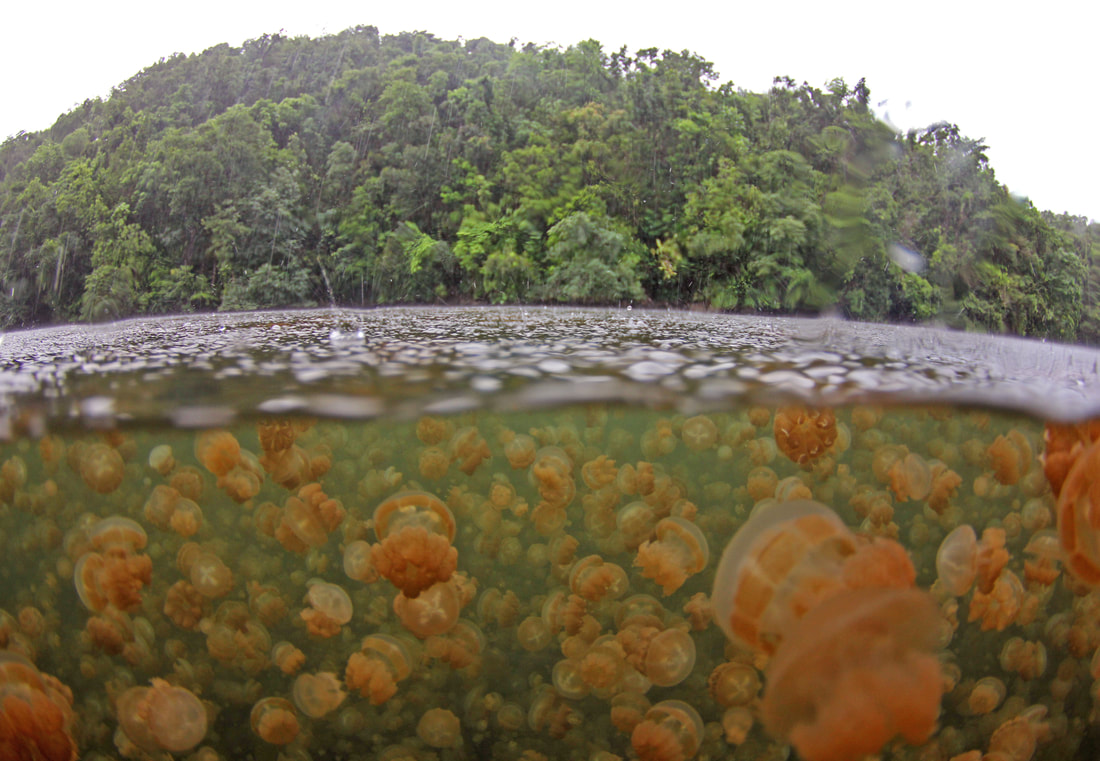Jellyfish Lake
Visitors from all over the world flock to the lake to experience the primordial essence of this unique marine sanctuary. Floating effortlessly on the surface each visitor is treated to the sensation of the gentle touch of millions of soft bodied medusas bouncing harmlessly off their bodies. Time indeed stands still as thoughts drift back to ancient seas before man, dinosaurs, and even fish roamed the planet.
Palau's Marine Lakes were formed during the earth's glacial episodes when sea levels were hundreds of feet lower than they are today. Rain water mixing with decaying leaf litter created a corrosive cocktail known as humic acid. The acids slowly eroded the limestone islands into progressively deeper pockets and valleys. When sea levels rose during interglacial warming episodes, the low valleys were back filled into enclosed lakes. Though the Rock Islands of Palau appear to be solid, they are in fact astonishingly porous and thus the enclosed lakes rise and fall with the tides every day!
Palau's Marine Lakes were formed during the earth's glacial episodes when sea levels were hundreds of feet lower than they are today. Rain water mixing with decaying leaf litter created a corrosive cocktail known as humic acid. The acids slowly eroded the limestone islands into progressively deeper pockets and valleys. When sea levels rose during interglacial warming episodes, the low valleys were back filled into enclosed lakes. Though the Rock Islands of Palau appear to be solid, they are in fact astonishingly porous and thus the enclosed lakes rise and fall with the tides every day!
|
The Jellyfish may have first been introduced to the lake via a sea bird known as a little pied cormorant. As the cormorant free dives for fish his feathers soak up sea water and potentially the larvae of marine invertebrates and potentially even fish. Upon landing in the lake, the Cormorants may have unwittingly initiated an evolutionary miracle. Now trapped within the lake, the predatory Mastigias would have found itself lacking both food resources and potential predators. The stinging cells (cnematocysts) stored on long trailing tentacles thus became superfluous. Through a process known as regressive evolution, the Jellyfish lost their tentacles and today have only a vestige of their stinging apparatus. Fortunately, the Jellyfish did not go hungry. Stored within their tissues were single celled algae known as Zooxanthellae (its fun to say!). The little algae photosynthesize to produce sugar. The Jellyfish then harvests much of the sugar to fuel their own metabolism. If we had Zooxanthellae, we could literally sunbathe for breakfast!
Over evolutionary time, the Golden Jellyfish transformed from floating predator to passive farmer. They spend their peaceful day migrating from East to West following the sunlight and avoiding shadows. |
The 4:00 "Rush Hour" is an unforgettable spectacle as the Jellyfish squeeze in bumper to bumper vying for the last precious rays of light. Recognizing the Ecological importance of these unique marine eco-systems Koror State carefully regulates and monitors all of Palau's salt water lakes. A $100.00 permit fee is required to visit the lake and this fee helps fund conservation and scientific monitoring programs throughout the rock islands.

